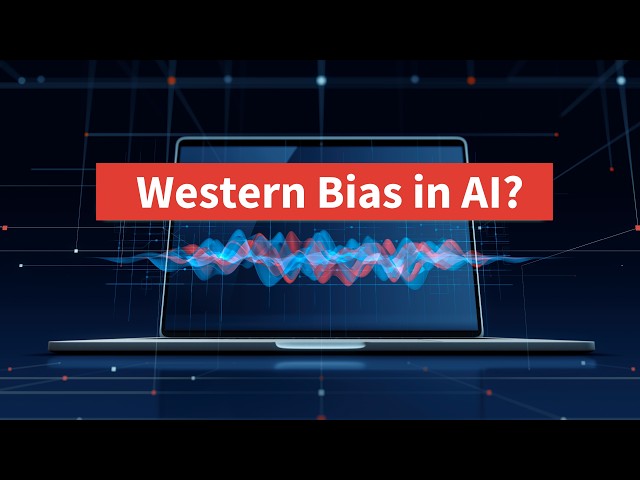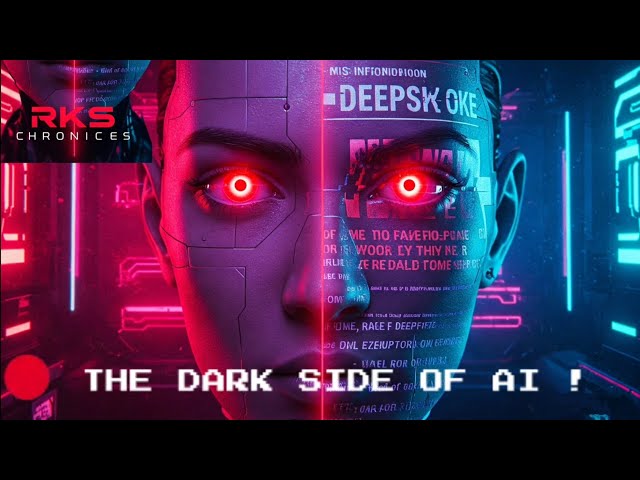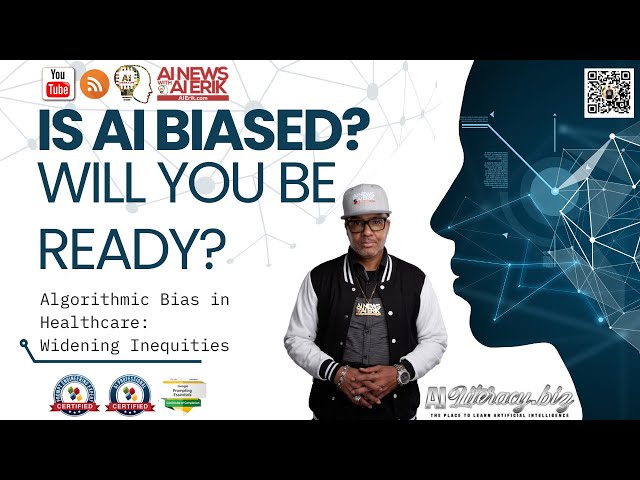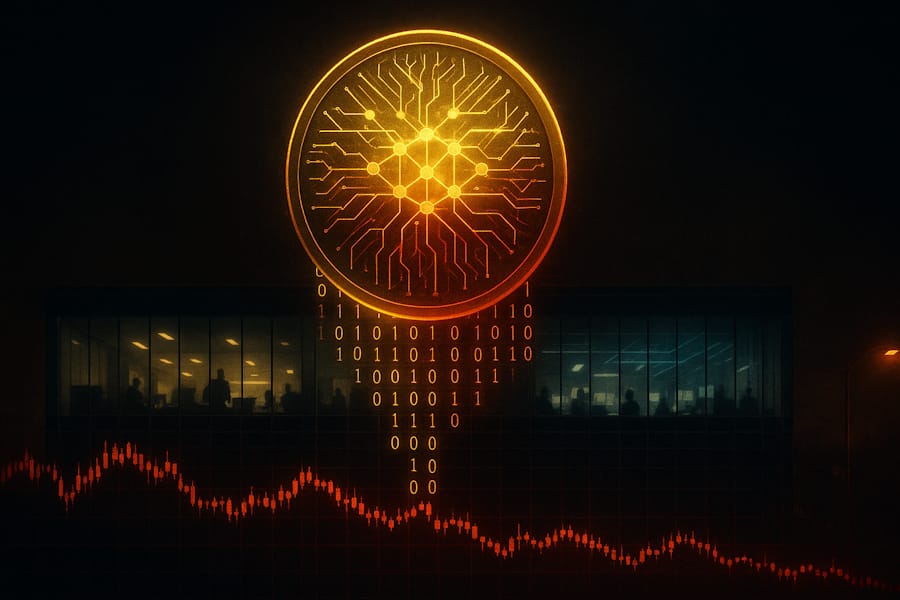What is AI Bias?

Publish Date: Last Updated: 10th November 2025
Author: nick smith - With the help of GROK3
AI Bias
Artificial Intelligence (AI) has become a cornerstone of modern technology, influencing decisions in healthcare, finance, criminal justice, and beyond. However, AI systems are not immune to flaws, and one of the most pervasive issues is AI bias. AI bias refers to systematic and unfair distortions in AI outputs or decisions, often reflecting prejudices present in the data, algorithms, or human processes involved in creating these systems. This article explores how bias creeps into AI, its dangers, its impact on results, the possibility of eliminating bias, the role of future and current AI in detecting bias, the types of bias, its connection to AI ethics, and how bias is monitored.
How Bias Creeps into AI
Bias in AI systems emerges from multiple sources, often subtly infiltrating the development pipeline:
- Training Data: AI models learn from historical data, which may reflect societal inequalities. For example, if a hiring algorithm is trained on resumes from a male-dominated industry, it might prioritize male candidates, perpetuating gender disparities.
- Algorithm Design: The choices made in designing algorithms can introduce bias. For instance, prioritizing certain features (e.g., zip codes in loan approval models) might inadvertently discriminate against specific demographics.
- Human Influence: Developers and stakeholders bring their own perspectives, consciously or unconsciously embedding assumptions into AI systems. A lack of diversity in development teams can exacerbate this issue.
- Feedback Loops: AI systems often refine themselves based on user interactions. If biased outputs are not corrected, they can reinforce and amplify existing prejudices over time.
- Data Collection Methods: Incomplete or unrepresentative data collection can skew results. For example, facial recognition systems trained on datasets lacking diversity in skin tones may perform poorly for underrepresented groups.
The Dangers of AI Bias
AI bias poses significant risks across various domains:
- Discrimination: Biased AI can perpetuate unfair treatment, such as denying loans to qualified applicants based on race or gender.
- Erosion of Trust: When AI systems produce biased outcomes, public confidence in technology diminishes, hindering adoption and innovation.
- Amplification of Inequality: AI can scale biases to unprecedented levels, affecting millions of people in automated decisions like job screenings or criminal sentencing.
- Legal and Financial Consequences: Organizations deploying biased AI may face lawsuits, regulatory penalties, or reputational damage. For example, in 2018, Amazon scrapped an AI hiring tool after it was found to penalize women’s resumes.
- Harm to Individuals: In healthcare, biased AI could misdiagnose patients from certain groups, leading to inadequate treatment or worse outcomes.
How Bias Impacts AI Results
Bias directly affects the fairness, accuracy, and reliability of AI outputs:
- Skewed Predictions: In predictive policing, biased data might lead AI to over-target certain neighborhoods, ignoring crime in other areas.
- Inequitable Outcomes: A biased loan approval model might approve fewer applications from minorities, even if they have similar credit profiles to other applicants.
- Reduced Accuracy for Subgroups: Facial recognition systems have shown higher error rates for darker-skinned individuals, undermining their effectiveness for diverse populations.
- Reinforcement of Stereotypes: AI-generated content, like chatbots or image generators, might produce outputs that reinforce harmful stereotypes, such as portraying certain professions as gender-specific.
Is It Even Possible to Not Have a Bias?
Achieving a completely bias-free AI is a formidable challenge. Bias is deeply rooted in human society, and AI systems are built, trained, and used by humans. Even with perfect data, defining "fairness" is subjective—what one group considers fair might seem biased to another. For instance, affirmative action policies might be seen as correcting historical bias by some and introducing new bias by others.
However, while eliminating bias entirely may be unattainable, reducing it is feasible. Techniques like diverse data collection, regular auditing, and inclusive development teams can minimize bias. The goal is not perfection but continuous improvement toward equitable outcomes.
Will Future AI Be Able to Determine Bias? Can Current AI?
Current AI: Modern AI systems can detect certain forms of bias to an extent. Tools like fairness metrics (e.g., demographic parity, equal opportunity) and bias auditing frameworks analyze model outputs for disparities across groups. For example, Google’s What-If Tool allows developers to test how changes in data affect model predictions. However, these methods rely heavily on human-defined parameters, and subtle biases may go unnoticed.
Future AI: Advances in AI interpretability and self-auditing could enable future systems to better identify bias autonomously. Models with enhanced reasoning capabilities might analyze their own decision-making processes, flagging inconsistencies or unfair patterns. Additionally, AI could be trained to recognize contextual biases by integrating diverse perspectives into its learning framework. However, human oversight will likely remain critical, as AI cannot fully grasp the nuances of societal values.
Types of Bias in AI
AI bias manifests in various forms, each with unique implications:
- Gender Bias: AI systems might favor one gender over another. For example, voice assistants often default to female voices, reinforcing stereotypes about subservient roles.
- Racial Bias: Algorithms may discriminate based on race or ethnicity. A 2019 study found that a healthcare algorithm underestimated risk for Black patients, affecting their access to care.
- Socioeconomic Bias: AI might prioritize affluent users, such as when advertising algorithms target high-income zip codes, excluding lower-income groups.
- Cultural Bias: Models trained on Western-centric data may misinterpret or undervalue non-Western cultural norms, affecting global applications.
- Confirmation Bias: AI can reinforce existing beliefs by prioritizing data that aligns with user preferences, as seen in social media recommendation systems.
- Selection Bias: Uneven data sampling can skew results, such as when medical AI is trained primarily on data from one demographic.
AI Bias and AI Ethics
AI bias is a central concern in AI ethics, which seeks to ensure technology aligns with societal values like fairness, transparency, and accountability. Biased AI violates ethical principles by:
- Undermining Fairness: Unequal treatment erodes the principle of justice in automated systems.
- Lack of Transparency: Black-box models make it hard to identify and correct biases, reducing accountability.
- Harm to Autonomy: Biased decisions can limit individuals’ opportunities, such as when job applicants are unfairly screened out.
Ethical frameworks, like the IEEE’s Ethically Aligned Design, emphasize bias mitigation through inclusive design, stakeholder engagement, and continuous monitoring. Organizations are increasingly adopting ethical AI guidelines to address these issues proactively.
How Is AI Bias Monitored?
Monitoring AI bias involves a combination of technical, organizational, and regulatory efforts:
- Auditing Tools: Developers use tools like Fairlearn or AI Fairness 360 to evaluate models for bias across metrics like accuracy and fairness.
- Human Oversight: Interdisciplinary teams, including ethicists and domain experts, review AI systems to ensure alignment with societal norms.
- User Feedback: End-users can report biased outputs, helping organizations identify issues missed during development.
- Regulatory Scrutiny: Governments and institutions are beginning to enforce standards. For example, the EU’s AI Act (proposed in 2021, under refinement in 2025) mandates risk assessments for high-stakes AI systems.
Is There a Governing Board to Study AI Bias?
No single global governing board exclusively studies AI bias, but several organizations and initiatives play significant roles:
- Standards Bodies: The IEEE and ISO develop guidelines for fair and transparent AI systems.
- Research Institutions: Groups like the AI Now Institute and Partnership on AI investigate bias and advocate for responsible AI practices.
- Government Agencies: In the U.S., the NIST (National Institute of Standards and Technology) has released frameworks for evaluating AI fairness, such as the 2023 AI Risk Management Framework.
- Industry Coalitions: Companies like Microsoft, Google, and IBM collaborate on bias mitigation through shared tools and best practices.
While these efforts are valuable, the lack of a centralized authority can lead to inconsistent standards. Proposals for international AI governance bodies are under discussion, but as of April 2025, no universal board exists.
AI Bias on YouTube

Study finds AI in healthcare is vulnerable to socioeconomic biases, raising red flags
YouTube Channel: WJZ

Western Bias in AI: Why Local Models Matter for Southeast Asia
YouTube Channel: Carnegie Explains

Dark Patterns in AI | Bias, Ethics & Misinformation | AI's Hidden Dangers Revealed | Ep 9
YouTube Channel: RKS Chronicles

🌟 Is AI Biased? Will You Be Ready? 🌟
YouTube Channel: AI Erik
Conclusion
AI bias is a complex and multifaceted issue that arises from flawed data, algorithms, and human decisions. Its dangers—ranging from discrimination to eroded trust—underscore the need for vigilant monitoring and mitigation. While completely eliminating bias may be impossible, current and future AI systems show promise in detecting and reducing it through advanced tools and ethical practices. By addressing specific biases like gender or racial disparities and embedding fairness into AI development, we can move closer to equitable technology. As AI continues to shape our world, robust oversight, diverse collaboration, and a commitment to ethics will be essential to ensure it serves all of humanity fairly.
Recent AI Articles
AI Questions and Answers section for What is AI Bias?
Welcome to a new feature where you can interact with our AI called Jeannie. You can ask her anything relating to this article. If this feature is available, you should see a small genie lamp in the bottom right of the page. Click on the lamp to start a chat or view the following questions that Jeannie has answered relating to What is AI Bias?.
Be the first to ask our Jeannie AI a question about this article
Look for the gold latern at the bottom right of your screen and click on it to enable Jeannie AI Chat.










